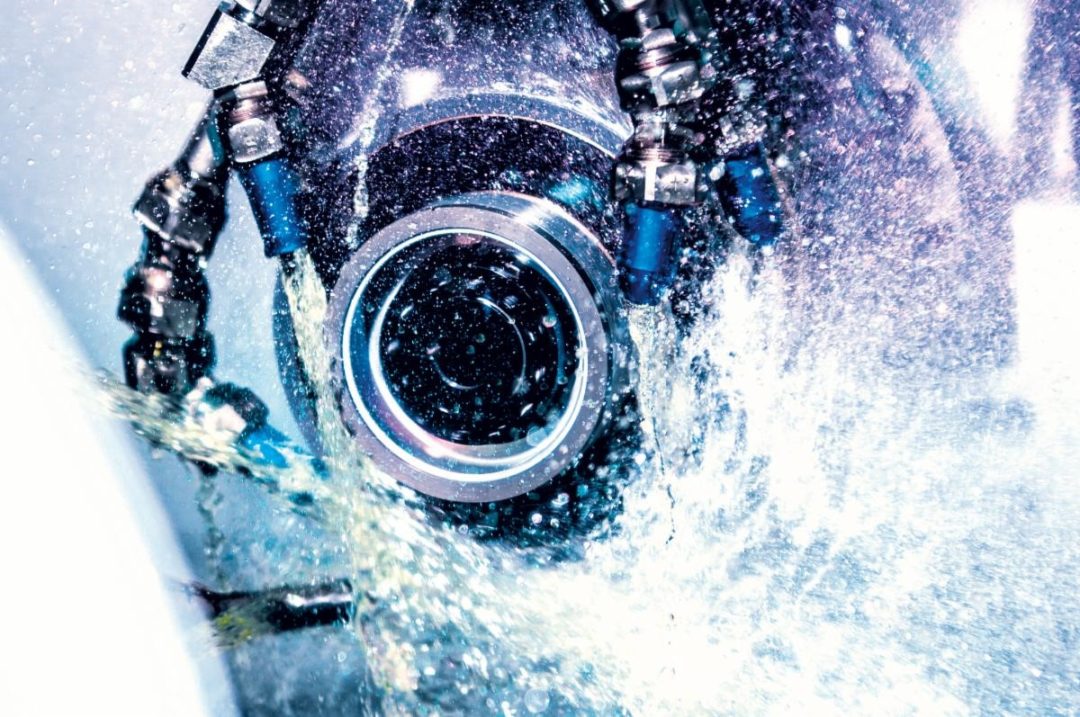
The right grinding fluid can lead to significant machine tool improvements.
Oelheld Offers Grinding Oil Performance Benefits
Many see the fluids as an unnecessary evil to the grinding process, failing to realize that selecting the right grinding fluid can lead to significant improvements in cycle time, surface quality, finishes, secondary operations, such as tool coatings. Oelheld has put together a short article on grinding oil considerations:
Viscosity Index (VI) is a unit-less measure of an oil’s change in viscosity relative to temperature change. The lower the number, the more change in viscosity happens. The higher the number, the more consistent the oil’s viscosity through changing temperatures. Keeping the viscosity near the nominal value is key to proper lubrication. Therefore, as heat is generated in grinding, an oil with a higher VI will provide better lubrication.
The category of the base oils and additive package is key to success. There are 4 categories of base oils, I, II, III, IV that are used in metalworking fluids. To achieve better performance, consider products made with Group III base oils. These oils are severely hydrotreated to remove impurities, improve viscosity index, and stability. Being derived from mineral oil, they are not synthetic. Some manufactures and producers may use the term “synthetized” to cause confusion with the end user. Synthetic they are not. Group III base oils also contains the gas to liquid, or GTL base oils. The GTL base oils have better characteristics than their sister products in Group III, but below those in Group IV. These oils are derived from converting natural gas into oil. In many instances, there is measurable performance benefits by moving to GTL based grinding oils.
If you really want to ramp your performance, look to Group IV, Pure Synthetic base stock products. Group IV base oils are composed of polyalphaolefins (PAO). They have high viscosity indexes (the measure of a fluid’s change in viscosity relative to temperature change). These base oils are not extracted from crude oil, but made from small, uniform molecules, allowing for very predictable properties and end results. Grinding oils produced with PAO’s offer high performance, process stability, and longevity. While grinding oils produced with PAO, will be at the top tier in pricing, the benefits and results far outweighs the marginal increase in purchase price.
One key attribute is the foam generation, or air release properties. Air is a poor medium for cooling and lubricating. With lesser grade base oils, there is more foam and air entrapment it the oil. This can lead to poor lubrication, poor cooling, surface defects, and poor filtration. Select a grinding oil that has the proper air release properties for your operation.
Not only does the base oil selection play an important part, the quality and abundance of the additive package within the grinding oil is key. There is a wide-ranging selection of additives available to grinding oil producers, as well as the base oil quality. Think of the “good, better, best” analogy. By cutting costs, using a good quality base oil with the best additive package, does not make an outstanding product. However, when you combine the best quality base oil, with the best quality, state of the art additive packages, now you have innovative fluid technology.
